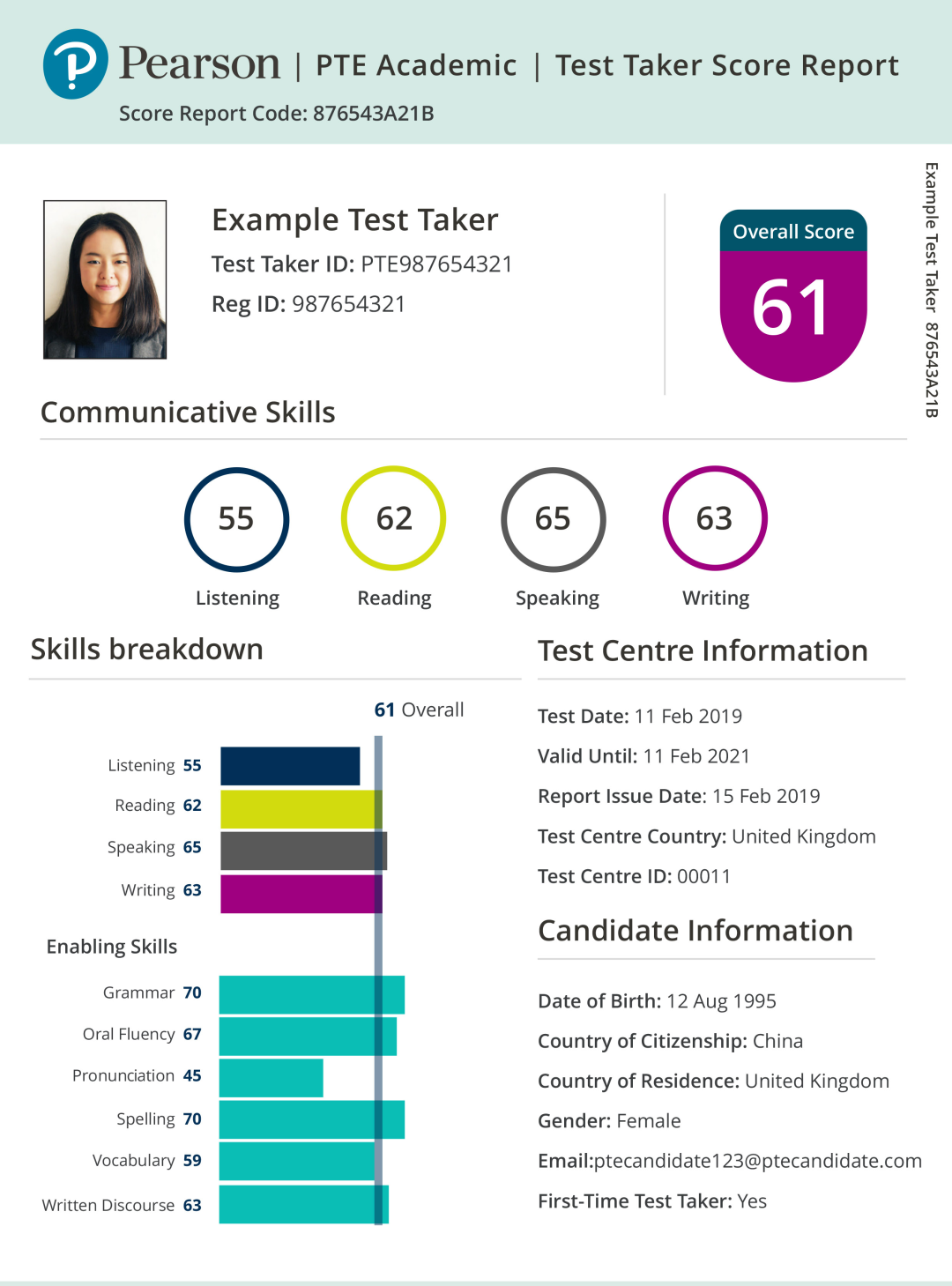Apply to a foreign university with confidence
- Properly fulfilled documents
- Perfect motivation letter
- Support from a personal mentor
- Offers from several universities
Article score: 4 out of 5 (1 review)
PTE is another exam to confirm knowledge of the English language. About what it consists of, how it is assessed and how to prepare for it, read the article.
Free consultation






Pearson Tests of English (PTE) — is a range of international exams designed for non-native English speakers. These exams assess English proficiency, including the ability to comprehend native speakers and effectively communicate both verbally and in writing. The PTE exam is widely recognized worldwide and serves as a reliable indicator of English proficiency.
PTE certificates are accepted by English-speaking colleges, universities, and international companies for job applications abroad. One notable advantage of PTE exams is that they do not have an expiration date. However, foreign universities still often require recent language exam results (typically within six months to a year), as in the case with Cambridge certificates.
PTE offers three distinct exam types, each catering to different purposes:
Additionally, there is the Business English Test, which is not officially included in the Pearson exams lineup but is listed on the company's website. Administered by the Pearson Group in collaboration with LCCI International qualifications, the Business English Test assesses business English proficiency. It is specifically targeted at individuals seeking certification for professional work in a business environment.
PTE Academic evaluates the academic English proficiency of foreign candidates aspiring to study at international universities and business schools. Notably, the test results of PTE Academic are recognized by esteemed educational institutions such as Harvard Business School, and Cornell University. Furthermore, visa centers in Australia and New Zealand accept PTE Academic certificates as valid evidence of English language proficiency for long-term student visas.
The exam encompasses 20 diverse question formats, from selecting the correct answers to composing essays on specific topics and summarizing information. PTE Academic assesses a prospective student's preparedness for academic life, which is reflected in the Reading section that features authentic excerpts from university lectures. Additionally, the exam often includes tasks that require describing graphs, tables, or diagrams. In the Listening section, test-takers encounter recordings with various accents — including British, American, Australian, Canadian — and non-native English speakers. Moreover, the recordings feature individuals of different age groups, which also adds complexity to the tasks.
| Components | Duration |
|---|---|
| Speaking and Writing | 77–93 min. |
| Reading | 32–41 min. |
| Listening | 45–57 min. |
The Speaking & Writing section consists of various tasks designed to assess text comprehension. These tasks include a brief personal introduction (30 seconds), reading aloud, sentence repetition, picture description, paraphrasing a lecture, and answering short questions. Additionally, candidates are required to write a text summary within 10 minutes and an essay of 200-300 words, with only 20 minutes allocated for the latter task.
The Reading section involves tasks such as selecting the correct answers, rearranging text passages, and filling in the blank exercises.
In the Listening section, candidates are evaluated on their ability to summarize information, select correct answers, fill in sentence gaps, identify incorrect words in a sentence, and transcribe dictated texts.
Notably, the PTE Academic test is conducted entirely online, without the presence of an examiner. During the three-hour test duration, candidates use a computer to read texts into a microphone, listen to audio fragments through headphones, and take notes in a specific program, eliminating the need for direct interaction with an examiner.
PTE General focuses on everyday English skills that are essential for effective communication in English-speaking cultures. The exam consists of written and oral components. The writing section includes tasks related to listening, reading, and writing, which are evaluated by Edexcel examiners in the UK. Verbal responses are assessed by local examiners who possess the necessary qualifications and have undergone specific training. Recorded oral responses are also sent to the UK for review to ensure impartial scoring by the examiners.
The exam is designed for students with varying levels of proficiency and is divided into five difficulty levels, ranging from Foundation (A1) to Proficient (C2). The duration of the exam varies depending on the chosen level, with higher levels featuring more challenging tasks and allocated time. The writing section lasts from 75 minutes to 2 hours and 55 minutes, while the verbal section follows a personal interview format, similar to IELTS or TOEFL, with durations ranging from 5 to 8 minutes.
The writing section consists of nine blocks, all centered around a specific theme based on the proficiency level. For lower levels, topics may revolve around leisure, family, or shopping. More advanced levels tackle abstract subjects, such as environmental pollution or the impact of politics on education, encouraging candidates to express their opinions on various issues. Writing section tasks can include multiple-choice questions based on passages, dictation exercises, or developing essays and short stories on specific topics.
In the verbal section, candidates face three or four tasks, which may involve engaging in a dialogue or role-play with the examiner, participating in a personal interview and answering questions, delivering a monologue on a given topic, or describing a picture (applicable to levels 3-5). The maximum achievable score in the exam is 90 points.
PTE Young Learners is a reliable English proficiency test designed for children aged 7 to 15 years old. The unique format of the exam fosters self-confidence and eliminates fear of failure in children, making their English learning experience enjoyable and motivating. The test is divided into several levels based on age and language proficiency: Firstwords (A1), Springboard (A1), Quickmarch (A1+), and Breakthrough (A2).
Each level of the exam consists of written and oral sections. All the exam questions revolve around the lives of the Brown family, and the children discuss various topics such as pets, food, shopping, home, school, family members, and recreation.
In the Listening section, children listen to two audio recordings of conversations among family members. They then draw lines from written phrases to corresponding images and mark boxes with the correct images for each question using crosses.
The Reading & Writing component includes tasks such as reading short dialogues and filling in missing words in sentences, matching words from two columns, inserting missing words into texts from a provided list, writing letters, and providing short answers to questions. The duration of the written exam ranges from 69 to 75 minutes.
The Speaking part of the exam takes the form of a game and consists of two tasks. With 3-5 participants, children play a board game, taking turns rolling dice and moving their game pieces (similar to the well-known game Monopoly). Each space on the board contains cards with questions and tasks. When a game piece lands on a specific space, the candidate picks up a card, reads the question aloud, and provides an answer. In the second task, each candidate receives a card with a monologue topic. They have one minute to speak on the given topic, followed by questions from other participants and examiners. The total duration of the oral responses is 20 minutes.
Pearson offers a range of English proficiency exams for business communication with the support of the LCCI association, an internationally recognized qualification system in countries such as the USA, the UK, Ireland, Australia, and more. The line of exams includes the following tests:
Both exams follow a similar structure. In the "Reading and Writing" section, candidates are required to complete a written assignment on a chosen topic related to business or tourism within 90 minutes. The "Speaking" part lasts no more than 11 minutes and consists of two tasks. The first task involves answering several questions from the examiner about future plans, studies, or work. The second task involves participating in a discussion on a topic chosen by the examiner.
The "Listening" section consists of two blocks. In the first part, candidates listen to 13 questions multiple times, with three possible answers for each question, and must select the correct answer. The second part includes 12 questions that also require accurate answers, but candidates must first listen to a short passage such as a conversation or announcement. Only 20 minutes are allocated to complete the tasks in this section.
For the PTE General exam, successful candidates receive certificates with grades that confirm their level of English language proficiency:
A maximum of 90 points can be achieved on the exam. To achieve a passing grade, candidates must answer at least 60% of the test tasks correctly. Exam papers are evaluated in the UK, ensuring fair grading. For candidates who took the PTE Young Learners exam, those who did not reach the threshold mark receive a Certificate of Participation as an incentive, while those who achieved the required level receive a Certificate of Attendance.

The preparation time for the PTE exam varies for each individual.
On average, it may take 3-6 months to successfully pass Level A1 of the PTE General test. Levels 1-3 require at least 1 year of active study for preparation, while Level 4 should be completed no less than 18 months after passing Level 3. The same applies to the transition between Level 4 and Level 5.
It is important to note that all levels of the PTE test form a cohesive system, meaning that candidates must be able to handle tasks from previous levels when advancing to a higher level.
| Website | Description |
|---|---|
| PTE Academic | Official website with exam description and preparation materials |
| PTE General | Website dedicated to the PTE General exam |
| Examenglish | Useful website providing sample assignments for PTE Academic and General |
| PearsonPTE | Official PTE exam channel on YouTube |
| Pearson Longman | Study guides for PTE preparation |
| PTE-test | Android application for exam preparation |
| Ptetutorials | Paid PTE preparation resource offering online tests and study materials |
| Pteacademicexam | Study materials and practice tests for PTE Academic |
60+ countries
we work with
$1,000,000 saved
by students through scholarships
6,400 offers
our students got